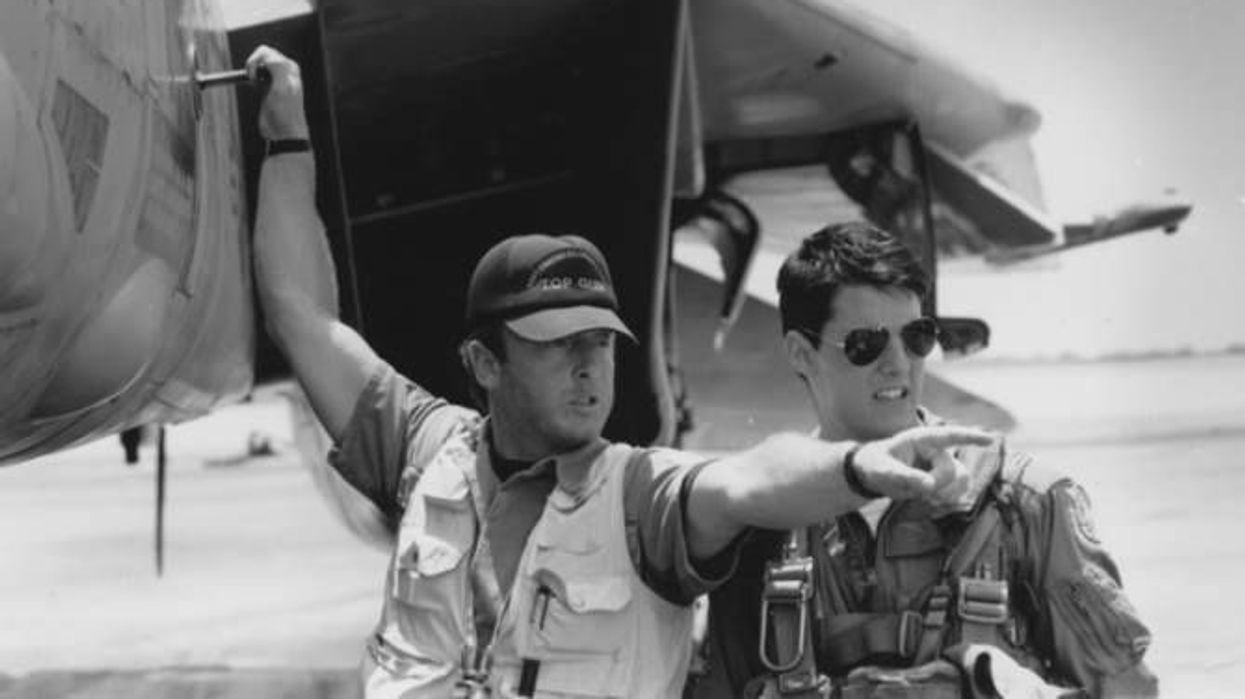Why Was Tony Scott Fired Off 'Top Gun' Three Times?
It's a good thing none of the firings stuck!

By now, you know the punchline of the joke. Top Gun was a breakout hit in the late 1980s and rocketed Tom Cruise into bona fide movie star history. It also propelled Tony Scott, the film's director, into the Hollywood A-list, making him a hip director with keen visuals that would go on to make some of our most memorable movies.
But all of that almost didn't happen.
It turns out that Scott was basically fired from Top Gun three times, yet somehow survived on set and kept shooting the movie. He revealed these details in the director's commentary of Top Gun, which he recorded shortly before his death in 2012.
Scott talked about being hired on Top Gun off his Saab commercial, which featured a car and a fighter jet side by side. After seeing that, the movie producers Jerry Bruckheimer and Don Simpson offered him the job. But Scott thought it was going to be more like Apocalypse Now. He wanted to do something dark and moody. They did not see it that way.
Eventually, Scott came around to their vision. But he knew he would secretly keep what he wanted alive. He did that by starting the shoot with an opening scene that terrified producers.
In his words, he “shot it in slow motion with graduated filters and that was sort of artsy and dark and again esoteric, and Paramount saw these dailies when I was still on the aircraft carrier and they panicked and forbade me to shoot another foot of slow-motion footage.”
But Scott didn't listen to the producers.
“So I was very deceptive. I shot one roll of normal footage and continued to shoot all the rest of it in slow motion because I had a vision about how the beginning should look. Unfortunately, they sent the wrong rolls back—they sent the slow-motion rolls back. So I was fired. My contract was terminated. But we were stuck on the aircraft carrier and couldn’t get back because the weather sucked, so I just kept shooting.”
The luxury of shooting on location meant Paramount couldn't get out into the water to stop Scott from continuing to make the movie. So he kept things going on the aircraft carrier like they hadn't said anything.
By the time they were back in contact, he was making his days and they let him stay. But not for long. When it came time to fire him again... it was for some costuming choices.
According to Scott, “The second [firing] was with Kelly McGillis. I made her look beautiful in a sort of—what’s the word? Whorish way, I suppose. And the studio took away my nine-inch pumps and they took away my makeup lady, in an effort to actually get Kelly looking a little more down to earth.”
That character change probably worked out best for the movie. The '80s were a wild time, but her character actually holds up today, which is saying something.
Finally, the third firing came late in production. “The third firing was when I pulled the visors down on the helmets for the guys flying in the jets. I wanted to see the sky and everything around. But obviously, it obscured our lead actors a little bit.”
That firing was brushed aside, and in the edit of the movie, you barely notice the visors down. Mostly because you are so wrapped up in the action and authenticity that you don't care if you see Cruise's face all the time.
These are amazing stories from the set, but my all-time Top Gun story is one I heard Cruise tell at Scott's funeral. For the opening of the film, Scott wanted to shoot the fighter jets taking off and landing while back-lit by the sun. The only problem was that the aircraft carrier was facing the wrong way for that to happen. When Scott asked the captain to turn the aircraft carrier, he was told that turning the ship cost $25,000. So Scott wrote the captain a $25,000 check so the ship could be turned and he could keep shooting. It's been said that Scott likes to tell people that check later bounced.
There will never be another director like Scott. Let us know which legends you're heard stand out to you by putting them in the comments.

 Richard Gere and Uma Thurman in 'Oh, Canada' via Kino Lorber
Richard Gere and Uma Thurman in 'Oh, Canada' via Kino Lorber  Uma Thurman in 'Oh, Canada'via Kino Lorber
Uma Thurman in 'Oh, Canada'via Kino Lorber 









